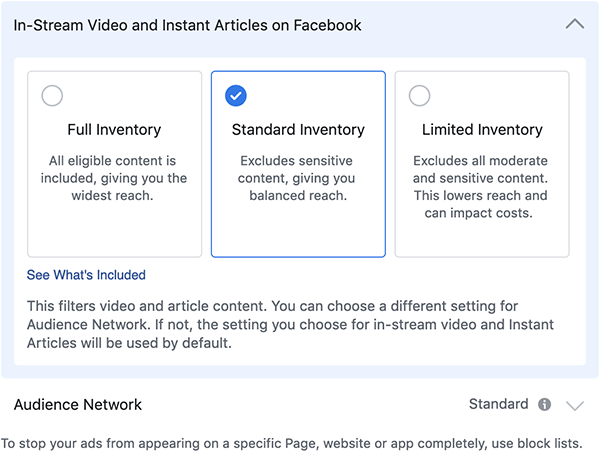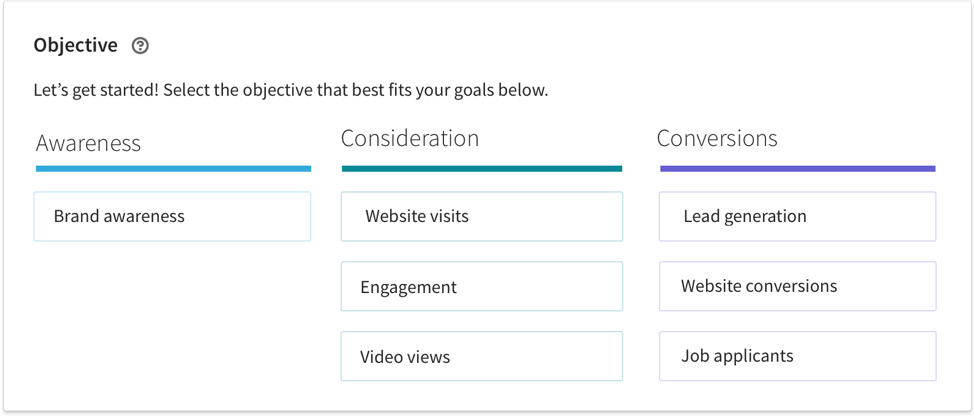Though Google and Microsoft Ads are identified as major PPC platforms, the social media advertising platforms are not far behind. And with the changes that they have been making, they have established themselves as the next hotspot for advertising.
Facebook Ads
Facebook has always been evolving its ad platform. The same happened this year. They updated how the potential reach is calculated, replaced relevance score with new relevance metrics (quality ranking, engagement rate ranking, conversion rate ranking) and removed the ad metrics that are not used that often.
This year, their main emphasis was also no brand safety. Earlier, they introduced brand safety controls such as the inventory filter that intended to make it easier for advertisers to control their profile across different media platforms with the options of limited inventory, standard inventory and full inventory.

Following this they also updated their brand safety control to help with creating a safe and welcoming community, collaborative proactively with industries, maintain quality amongst content, publisher and ads. And also simultaneously updated their advertising policies for financial services and products.
After announcing about this feature last year, Facebook rolled out the tool that helps people view and manage their off-facebook activity.
Instagram has been investing in shopping to help customers make the decision of purchasing on their platform. This was further optimized with the launch of checkout to make it quick and secure for people to complete transaction of a product they saw on Instagram. As an extension to this they later added the option to shop the inspiring looks of creators on Instagram, without leaving the platform. Later this year, they started testing the ability to run existing shopping posts as ads, a step towards understanding the success rate of shopping posts.
To add a new dimension to stories ads, Instagram introduced interactivity in the Instagram Stories to help business establish a stronger connect with people. They later introduced branded content ads, to let business tell their brand stories and create measurable impact on new audiences.
Seizing another opportunity, Instagram introduced ads as part of the browsing experience of users, much like the ads seen in the main feed.
Twitter Ads
The 6-second video bid unit was launched this year, to help advertisers present their video stories at the moment when the audience is more receptive of it. Advertisers can transact on a longer view and this bid option is available for Promoted Video, In stream video and In stream video ads. Twitter also updated their advertising policies to not accept advertising from state controlled news.
Pinterest announced the availability of Pinterest Ads to business in Germany, Austria, Spain and Italy, helping them reach out to people with their great ideas.
LinkedIn Advertising
After redesigning the campaign manager last year, LinkedIn updated the campaign manager with 3 new objectives, to help align with your campaign objectives. This was followed with revamping Sponsored InMail as Message Ad.

Targeting was another area of improvement for LinkedIn. This year started with the launch of Interest Targeting that let advertisers map their reach to professional interests. LinkedIn further introduced 3 new ways to target right audiences with the help of lookalike audiences, audience templates, and the addition of Microsoft Bing search data to Interest targeting. Taking this up a notch, they announced powerful audience forecasting optimized reporting features to help marketers hone their reach with actionable insights.
They also brought more transparency to ads on their platform, by adding a new ‘Ads’ tab on LinkedIn Pages, with which users can easily view all Sponsored Content from past 6 months.
Quora Ads
Quora announced an array of updates around Targeting. They launched Question Retargeting, to let advertisers target users who showed interest in their products or services on Quora. Following that up with Keyword Targeting, to target specific questions that contain the desired keywords. And later the year, they announced Gender Targeting, to help advertisers better reach their ideal audience by apply gender (male specific or female specific call-to-action) to any ad set.
Further to help reengage with audiences who have displayed a strong intent towards a product or service you offer, with the help of Keyword History Targeting. They also, introduced the option to create audiences from Pixel Events, and target users who have taken an action on your website, be it a purchase or adding product to the cart. Neilsen Designated Market Areas regions were also made available to advertisers to target their ads.
They also redesigned their ad targeting experience, and help marketers identify targeting options best suited to achieve your goals and make informed decisions.
Here are some set of strategic action steps taken by Quora. They introduced Bulk Ad Creating and Editing to help advertisers manage their numerous ads seamlessly and effortlessly. To assist advertisers in making profitable decisions , Auction insights was introduced to understand the competitiveness of your ads. To help achieve your lead generation goals and gather all information required to generate a valuable lead, Lead Gen Forms was introduced in beta. Another major update was the launch of Simplified Ad Set Duplication, with which advertises could easily create split tests.
Related Links




Stop the wasted ad spend. Get more conversions from the same ad budget.
Our customers save over $16 Million per year on Google and Amazon Ads.